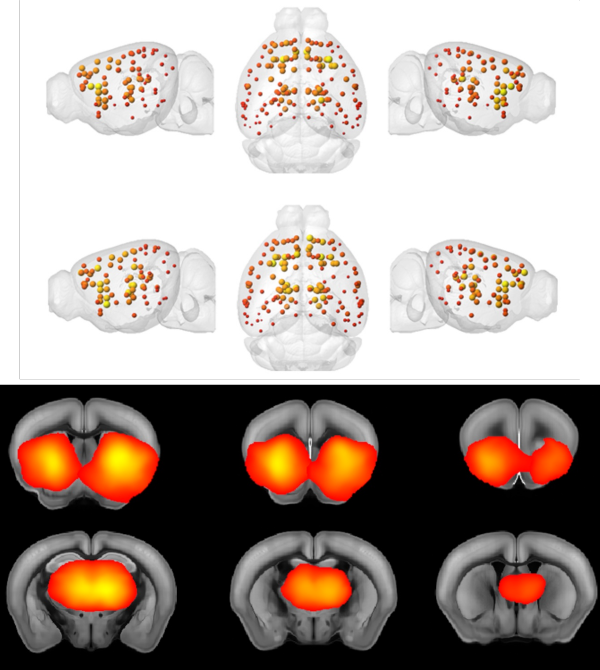
Using genetically engineered mice, postdoctoral fellow Lorena B. Areal, Ph.D., studies the effects of dopamine-related mutated genes found in patients diagnosed with bipolar disorder, attention deficit hyperactivity disorder and autism spectrum disorder, on brain signaling and behavior.
Areal was recently awarded the Advanced Magnetic Resonance Imaging and Spectroscopy pilot grant, supported by the National High Magnetic Field Laboratory, the National Science Foundation, the National Institutes of Health and the State of Florida.
This grant gives Areal access to a functional MRI to investigate how dopamine dysfunction can drive these disorders and help uncover more precise treatment strategies. The studies funded establish a collaboration with brain imager Marcelo Febo, University of Florida.


Peter Rodriguez, graduate research assistant in the Charles E. Schmidt College of Medicine, was recently awarded the Delores Auzenne Fellowship, sponsored by the State University System. The fellowship is designed to encourage students to pursue graduate degrees in areas where they are historically underrepresented.
Rodriguez, president of the FAU Neuroscience Student Organization, focuses his work on identifying molecular pathways in glial cells that are critical to the health and proper function of neurons. These cells are responsible for supporting neuronal energy supply and metabolism, but when glial cells are disrupted, degeneration of nearby dopamine neurons occurs increasing the risk of diseases such as Alzheimer’s and Parkinson’s.
Combined with results of his previous studies, which have shown similar traits to the major dysfunctions observed in human patients with brain disease, Rodriguez aims to leverage the knowledge gained from his research to provide therapeutic insight for multiple neurodegenerative diseases.
Rodriguez’ work contributed to a newly funded grant to the Blakely lab from the Florida Department of Health to link worm discoveries to Alzheimer’s disease. (See story Using Worms to Find a Cure for Alzheimer’s)

For her research in experimental psychology, Gianna Cannestro, a student in the Complex Systems and Brain Science doctoral program, recently earned the McKnight Doctoral Fellowship.
The fellowship, created to build equity, diversity and inclusion for under representation of African American and Hispanic populations for those in pursuit of a career in research and teaching at a college or university level, provides students pursuing doctorate degrees at Florida universities with tuition up to $5,000 per year, plus an annual stipend of $12,000.
Cannestro studies how the sense of touch alters or is altered by other activities in the brain. By understanding the relationship between human touch perceptions and chronic pain, Cannestro’s goal is to further advance dynamic approaches to pain management.

Felix Mayer, Ph.D., a postdoctoral fellow in the laboratory of Randy D. Blakely, Ph.D., and the Charles E. Schmidt College of Medicine, was recently selected for the Max Kade Fellowship by the Austrian Academy of Sciences, which encourages the transatlantic exchange between German-speaking countries and the U.S., to identify non-addictive treatment methods for patients diagnosed with attention-deficit/ hyperactivity disorder (ADHD).
Those endeavors address an unmet medical need as current standard medications are associated with a high abuse liability and may serve as a gateway to stronger stimulants. Mayer’s research uses mice engineered to express a gene variant found in patients who were diagnosed with ADHD, autism spectrum disorder and bipolar disorder. Hence, the findings of his studies could potentially be applied to other neuropsychiatric disorders as well.
With a light-emitting sensor that allows him to measure the levels of dopamine in the brain in real time, Mayer looks at the behavior and release pattern of dopamine in the brains of freely behaving mutant and normal mice. These studies are supported with biochemical approaches to assess the underlying neurochemistry in additional detail. Mayer has been invited to several national and international conferences to present the results of these studies.
